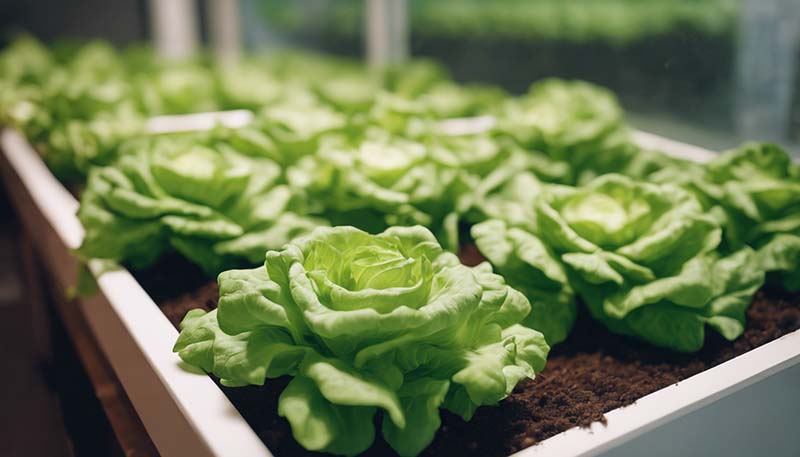Indoor Gardening: How to Grow Indoor Lettuce
Introduction
Growing lettuce indoors is a fantastic way to enjoy fresh, crisp, and healthy greens all year round. It's not only a great addition to your indoor garden but also a beginner-friendly option for those new to indoor gardening. Lettuce is a cool-weather crop that thrives in moderate temperatures and can be grown in various types of containers, making it an ideal choice for indoor cultivation.
Choosing the Right Lettuce Varieties
There are numerous lettuce varieties to choose from, each with its unique taste, texture, and growth habit. For indoor gardening, consider the following factors when selecting a variety:
- Size: Opt for compact or dwarf varieties that don't require a lot of space to grow.
- Growth habit: Choose between loose-leaf or head-forming types, depending on your preference.
- Color: Lettuce comes in various colors, including green, red, and even purple, adding a pop of color to your indoor garden.
- Taste: Varieties can range from mild to peppery, so choose according to your taste buds.
Understanding Light Requirements
Lettuce plants need plenty of light to grow well. Ensure your indoor garden has access to at least 6-8 hours of bright, indirect sunlight daily. If natural light is insufficient, consider using grow lights to provide the necessary light for your lettuce plants.
Advertisement
Starting with the Right Containers
Lettuce can be grown in various types of containers, including pots, planters, and even repurposed items like plastic containers or wooden crates. When choosing a container, consider the following:
- Size: Ensure the container is large enough to accommodate the mature size of the lettuce plant.
- Drainage: Good drainage is essential to prevent root rot. Make sure your container has drainage holes.
- Material: Choose a material that is lightweight and easy to clean, such as plastic or fiberglass.
Preparing the Soil
Lettuce requires well-draining, fertile soil with a pH between 6.0 and 7.0. You can use a commercial potting mix or create your own by combining equal parts of peat moss, vermiculite, and perlite. Adding compost or well-rotted manure can improve the soil's fertility.
Planting and Spacing
Start lettuce seeds indoors 4-6 weeks before the last expected frost date. Sow seeds about 1/4 inch deep and space them about 6-12 inches apart, depending on the variety's size at maturity. Lightly cover the seeds with soil and water gently to avoid dislodging them.
Watering and Humidity
Lettuce prefers consistent moisture, so water regularly to keep the soil evenly damp but not waterlogged. Overwatering can lead to root rot and other diseases. Maintain a humidity level of around 60-70% to promote healthy growth. You can use a humidity meter to monitor the indoor humidity levels.
Fertilizing Indoor Lettuce
Feed your lettuce plants with a balanced, water-soluble fertilizer every 2-3 weeks, following the package instructions for the recommended dosage. Avoid over-fertilizing, as it can lead to bitter-tasting leaves and other issues.
Dealing with Pests and Diseases
室内种植莴苣可能会遇到一些害虫和疾病问题。以下是一些常见的问题及其处理方法:

- 蚜虫:使用肥皂水或生物农药如瓢虫来控制蚜虫。
- 粉蚧:用棉签蘸酒精轻轻擦拭受感染的叶子,以去除粉蚧。
- 灰霉病:保持良好的通风和适当的空气湿度,以减少灰霉病的发生。
- 根腐病:确保土壤排水良好,避免过度浇水。
Harvesting Indoor Lettuce
Lettuce is typically ready to harvest in about 30-60 days, depending on the variety. Harvest outer leaves when they reach a suitable size, or cut the entire plant at the base when it reaches maturity. Regular harvesting encourages new leaf growth and can extend the life of your indoor lettuce crop.
Conclusion
Growing indoor lettuce is a rewarding experience that allows you to enjoy fresh, homegrown greens no matter the season. With the right care and attention, you can have a continuous supply of delicious, healthy lettuce at your fingertips. Happy gardening!
Comment